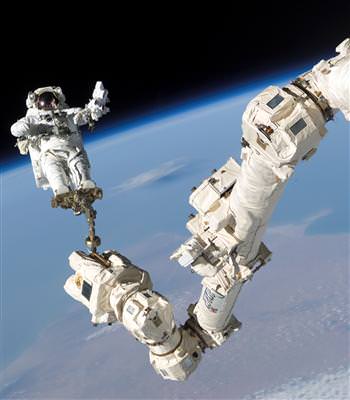[/caption]
On April 19, 2001, space shuttle Endeavour’s STS-100 mission launched to the space station, and in the payload bay was Canadarm2, a larger, more robust successor to the shuttle’s Canadarm. The Space Station Remote Manipulator System (SSRMS) is a sophisticated “construction crane,” and is responsible for much of the successful building of the ISS — module by module — in space.
“She is without a doubt one of the most critical components on board station having participated in the construction of the spacecraft that is on orbit today,” said Mike Suffredini, Program Manager of the International Space Station. “Twenty-nine missions have been supported by Canadarm2, two of them capturing and berthing the HTV vehicle, and in all that time with absolutely flawless performance. Without her we couldn’t have gotten to where we are today.”
See a gallery of images of Canadarm2’s 10 years in the space construction business.
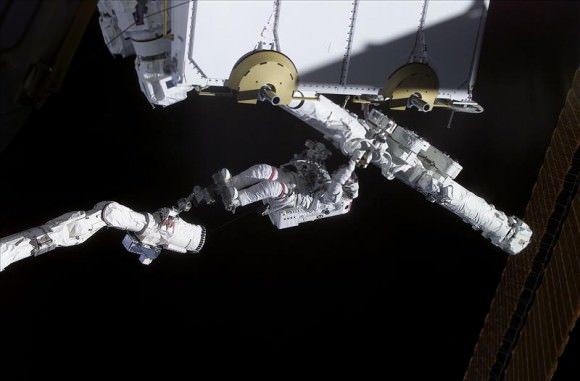
Canadarm2 was installed on the ISS by astronaut Chris Hadfield during the first spacewalk by a Canadian. Canadarm2 has unloaded hundreds of tons of equipment and supplies ferried by the shuttle and assisted almost 100 spacewalks. Endeavour’s last flight later this month will mark Canadarm2’s 28th Shuttle mission.
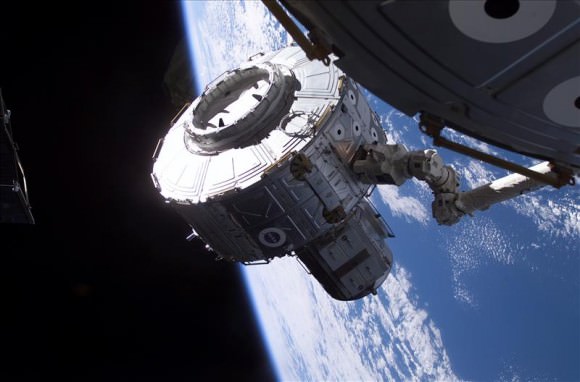
The Canadian Space Agency says that Canadarm2’s role on the ISS will expand as the orbital lab nears completion: in addition to performing routine maintenance, the robotic arm will make more frequent “cosmic catches,” where it will capture, dock and later release visiting spacecraft, as it has done with the HTV. When the space shuttle retires, reusable commercial spacecraft, like SpaceX’s Dragon and Orbital’s Cygnus, will be used to bring supplies and equipment to the ISS. Canadarm2 will capture each of these visiting vehicles. In late 2011 and early 2012, Canadarm2 will capture a series of 6 commercial spacecraft in just 7 months, beginning with the Dragon spacecraft, currently scheduled to arrive in October 2011.
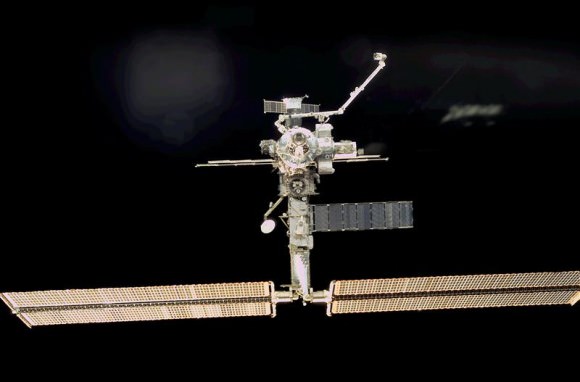
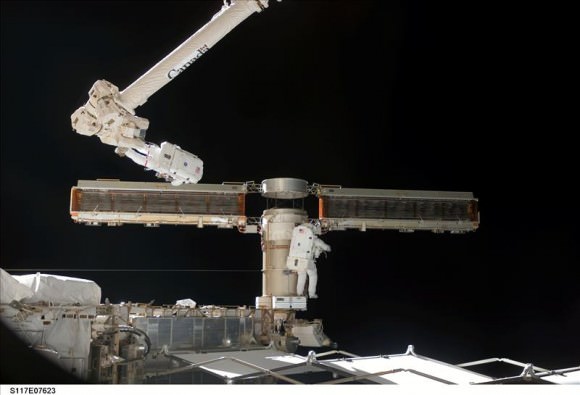
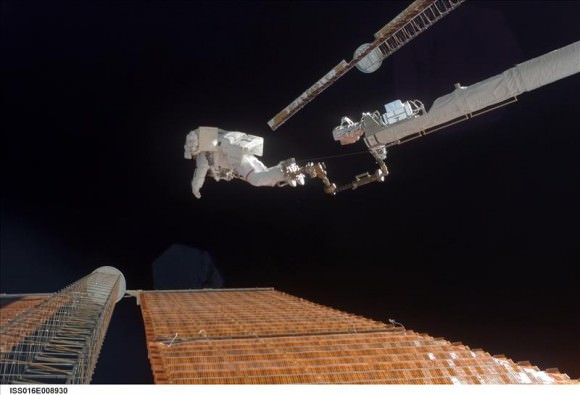
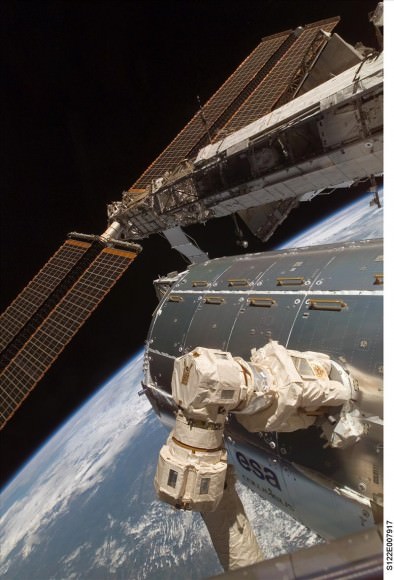
More info on the SSRMS and how it was built:
The Expedition 27 crew on board the ISS pay tribute to 10 years of the SSRMS:

